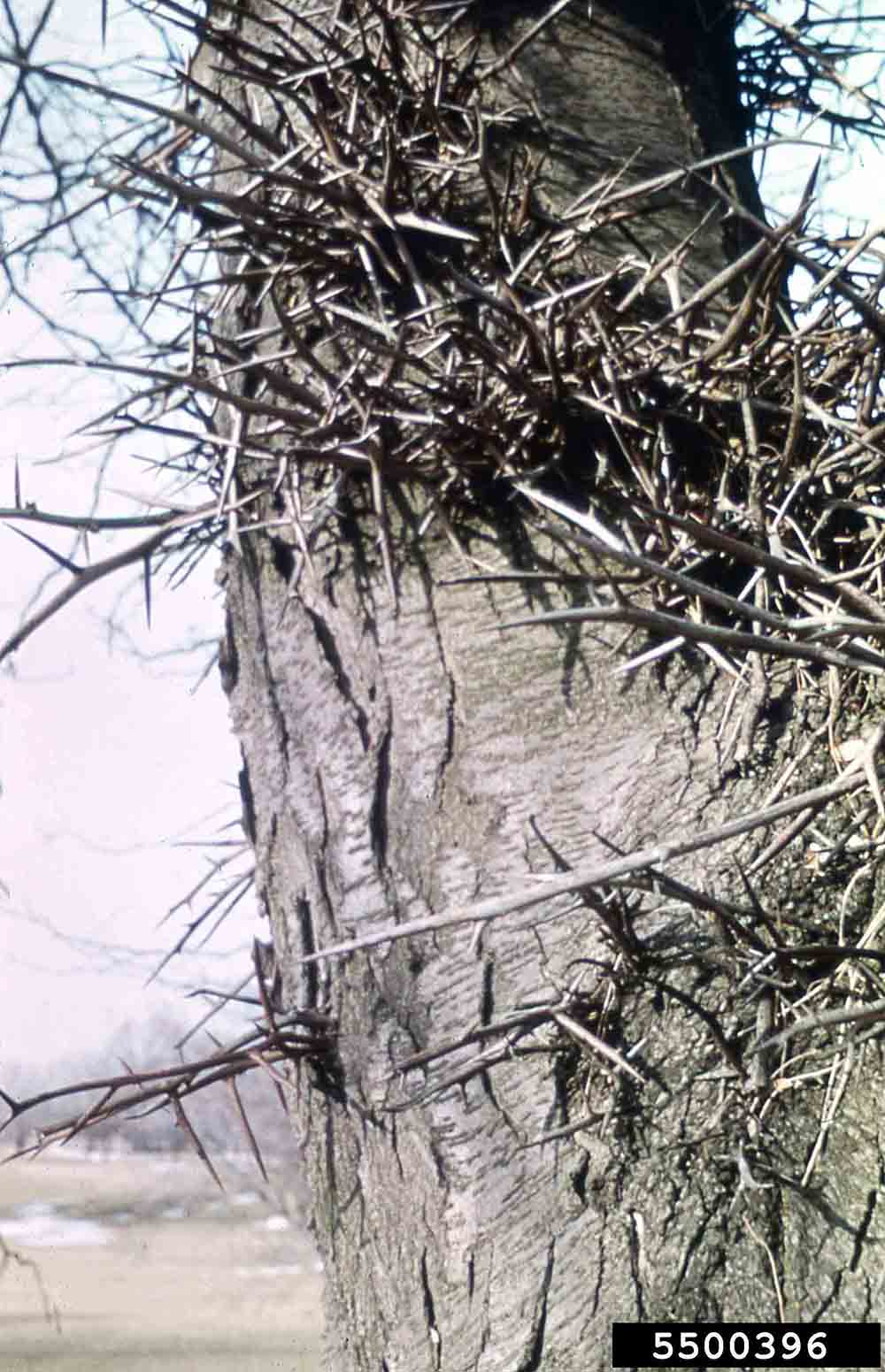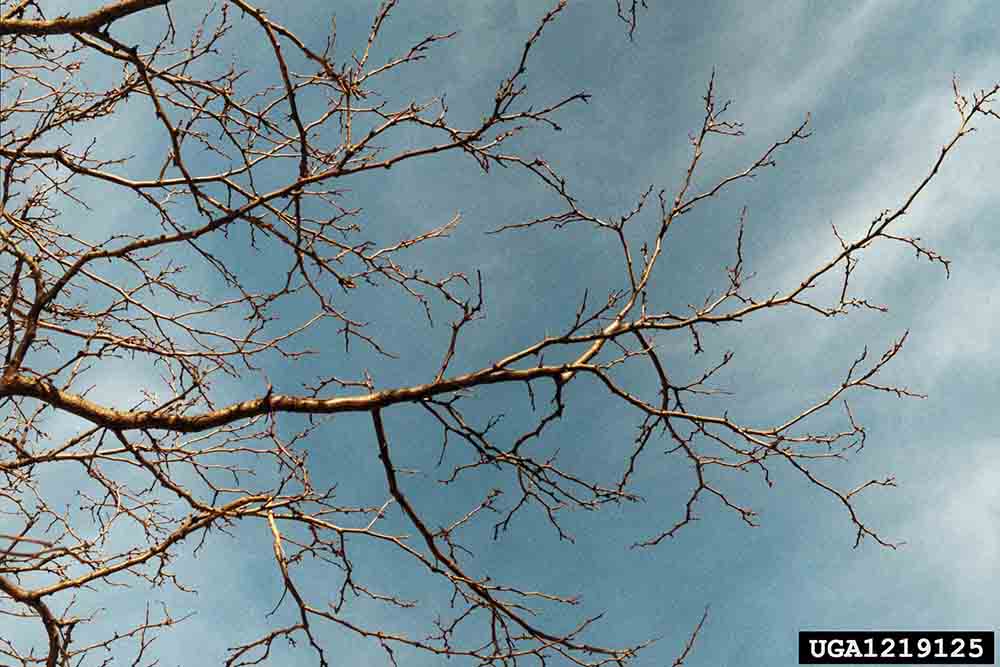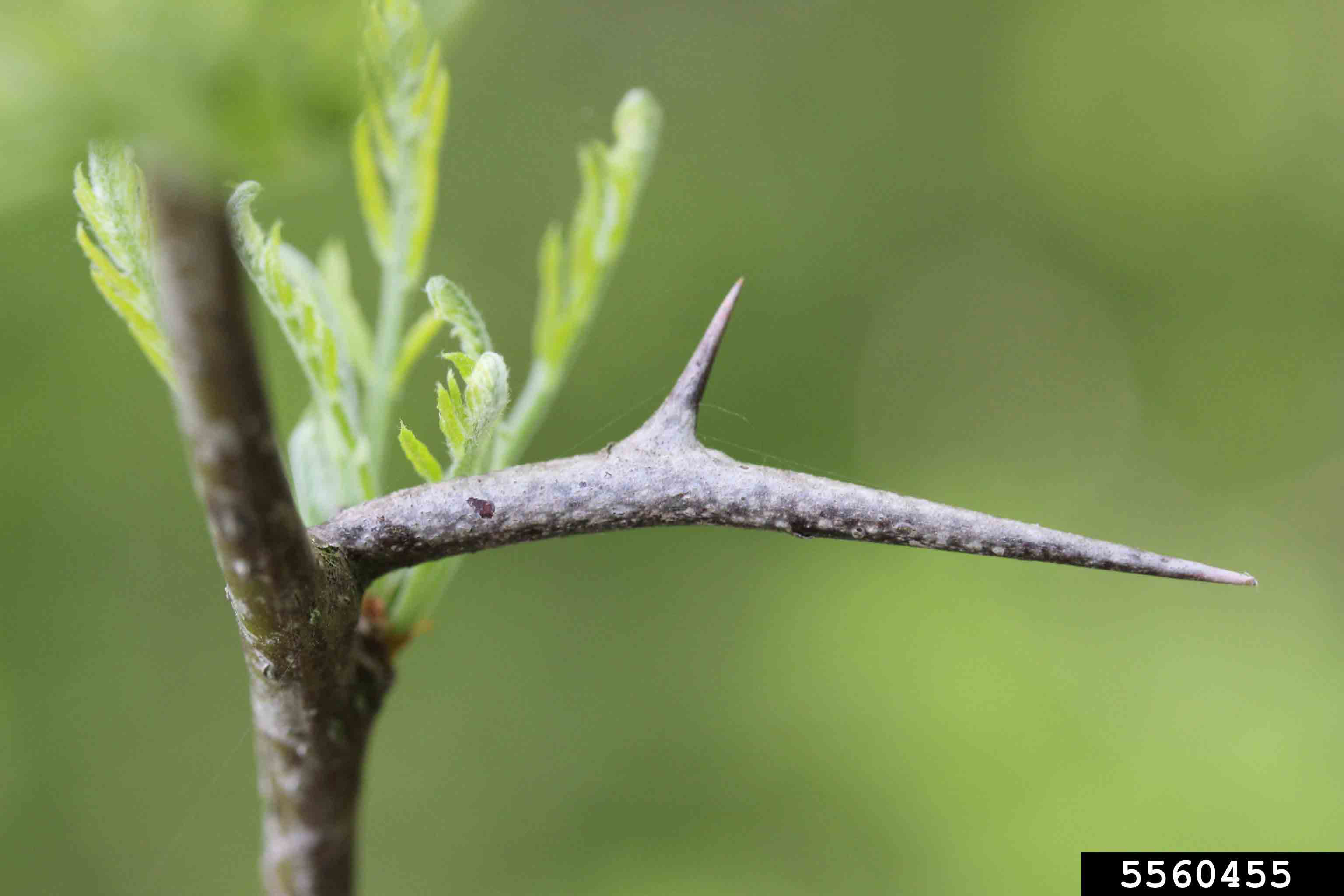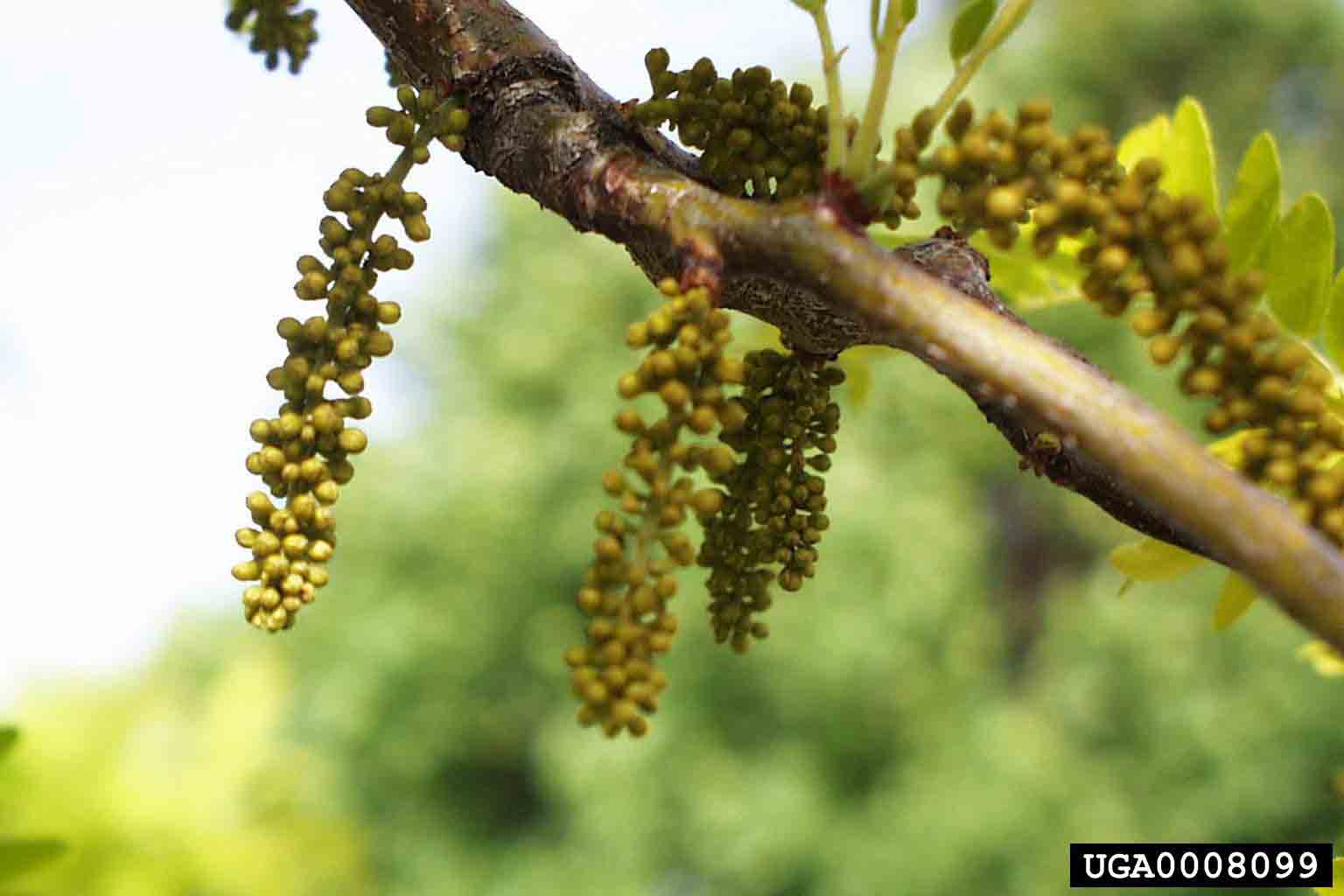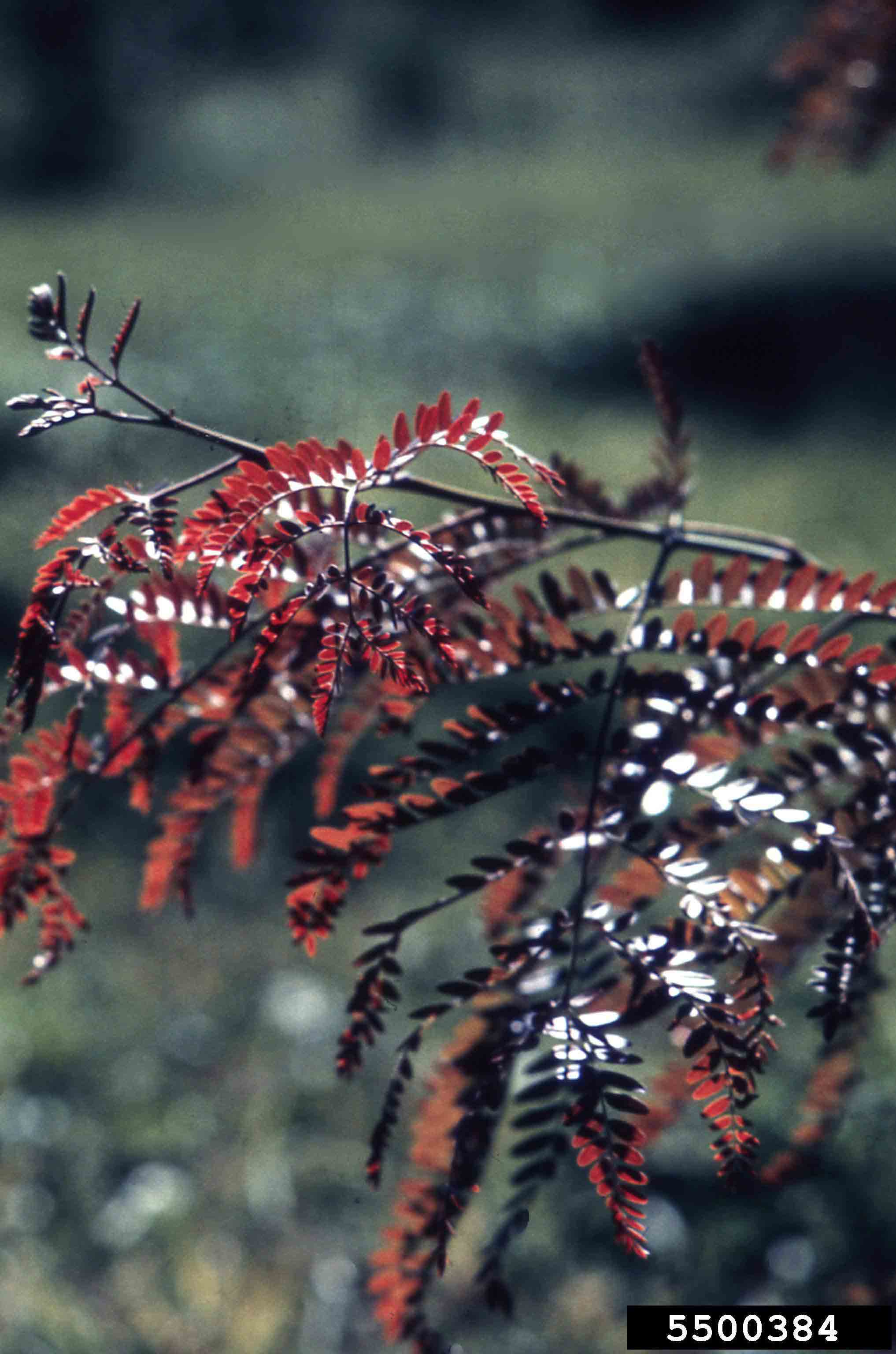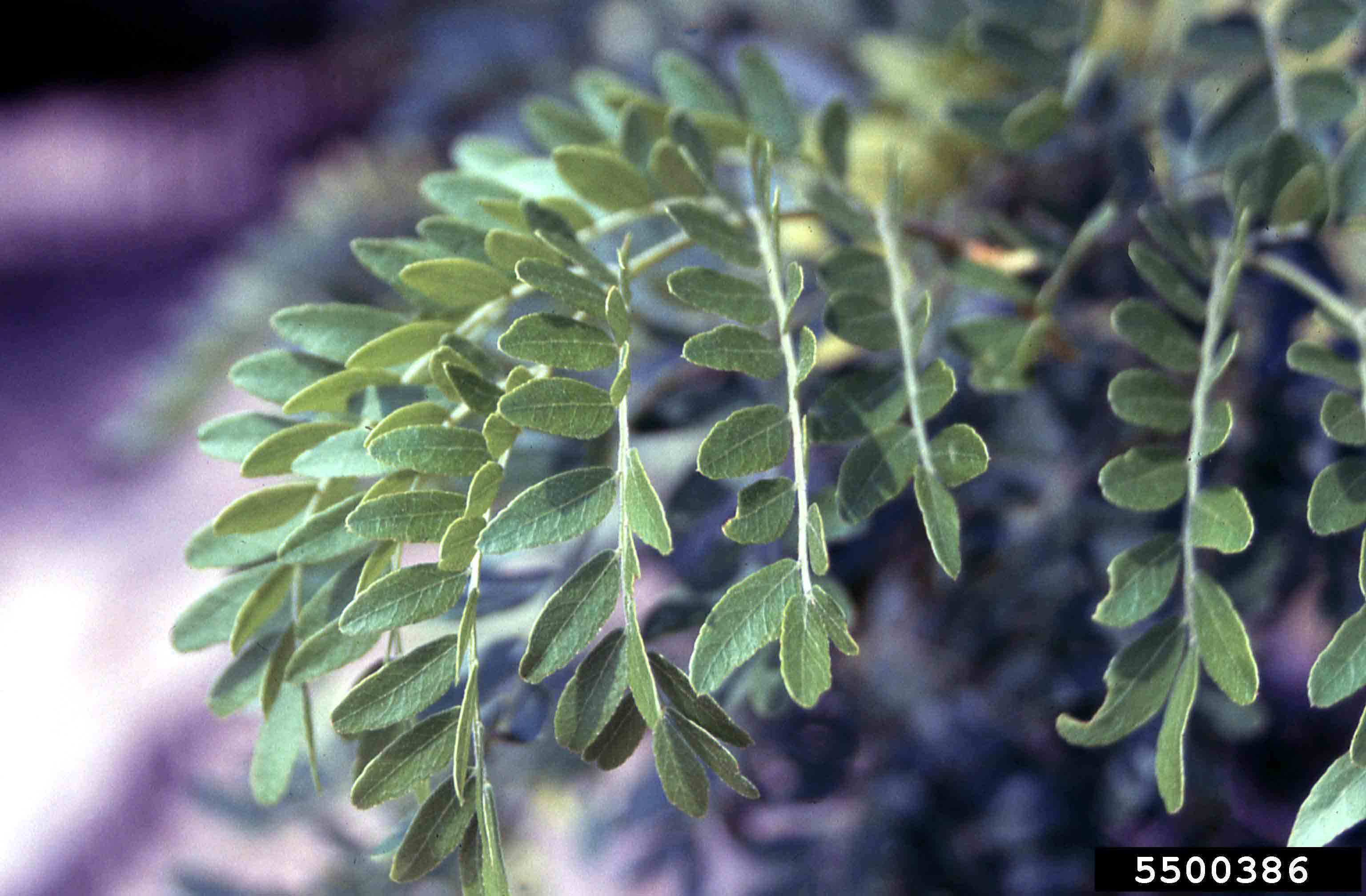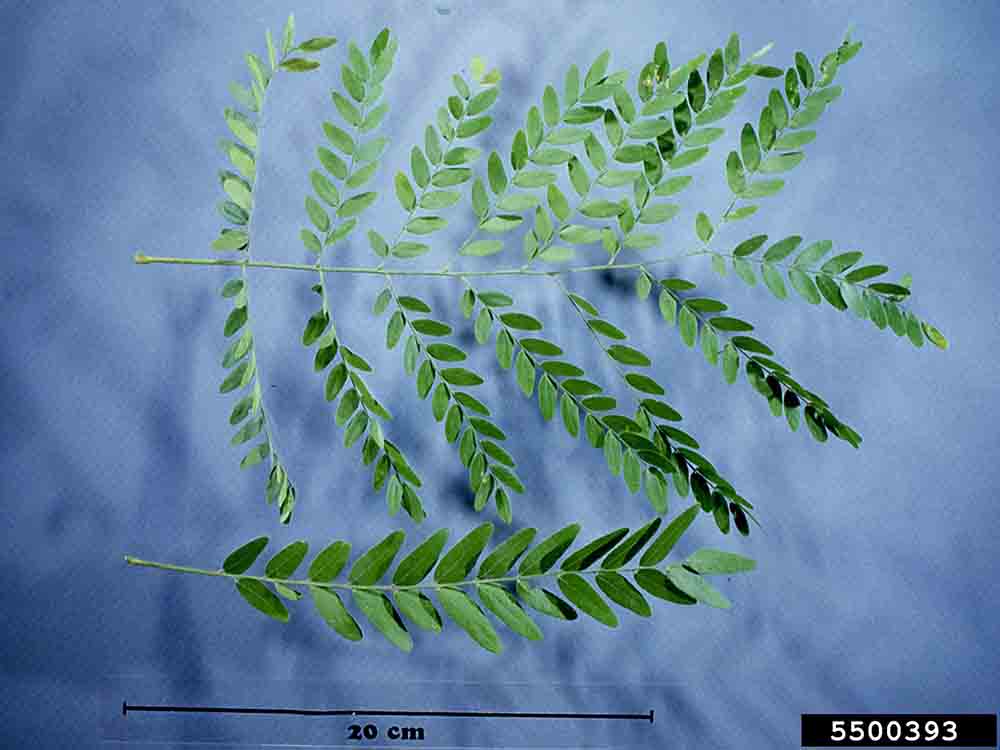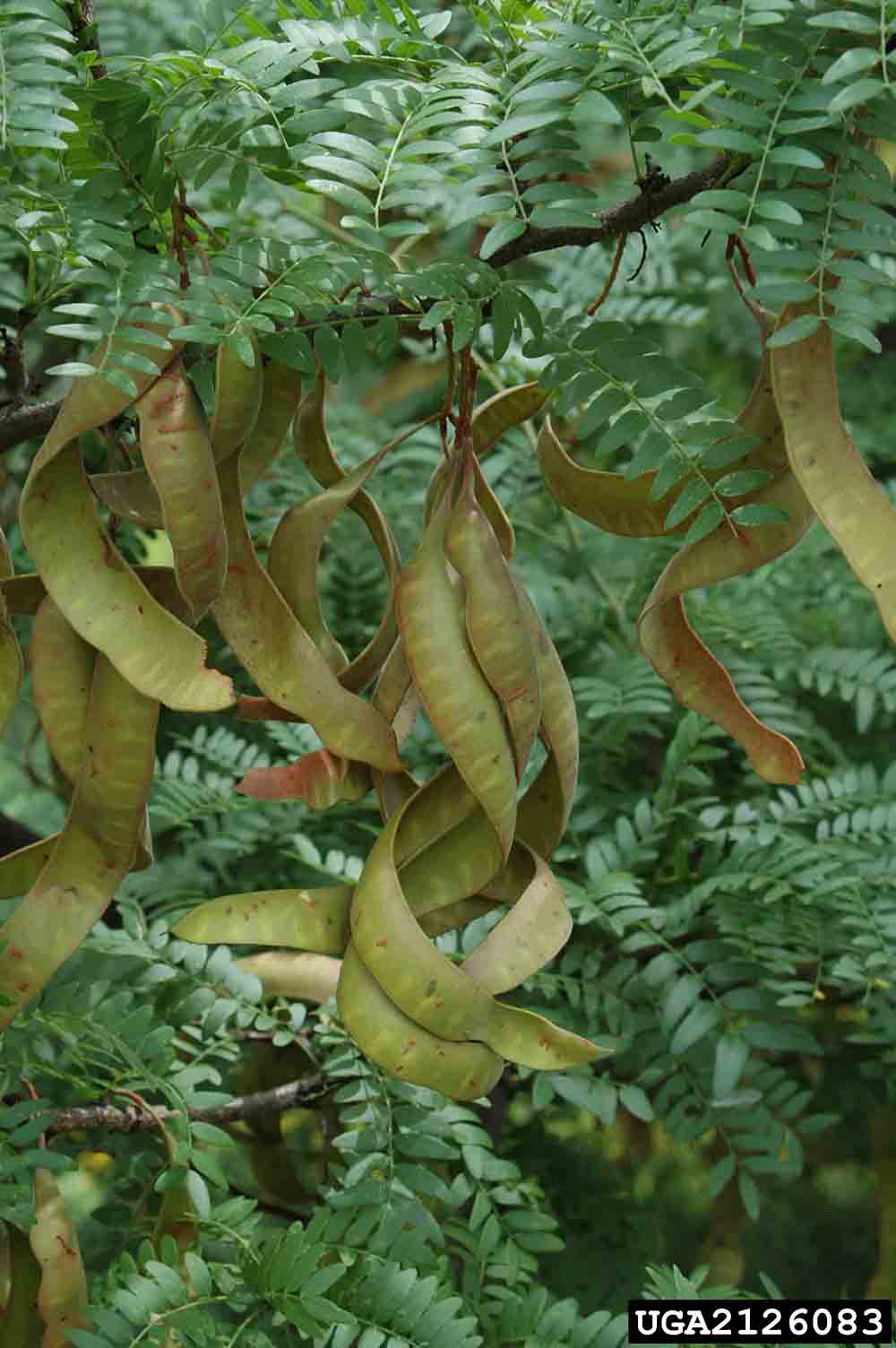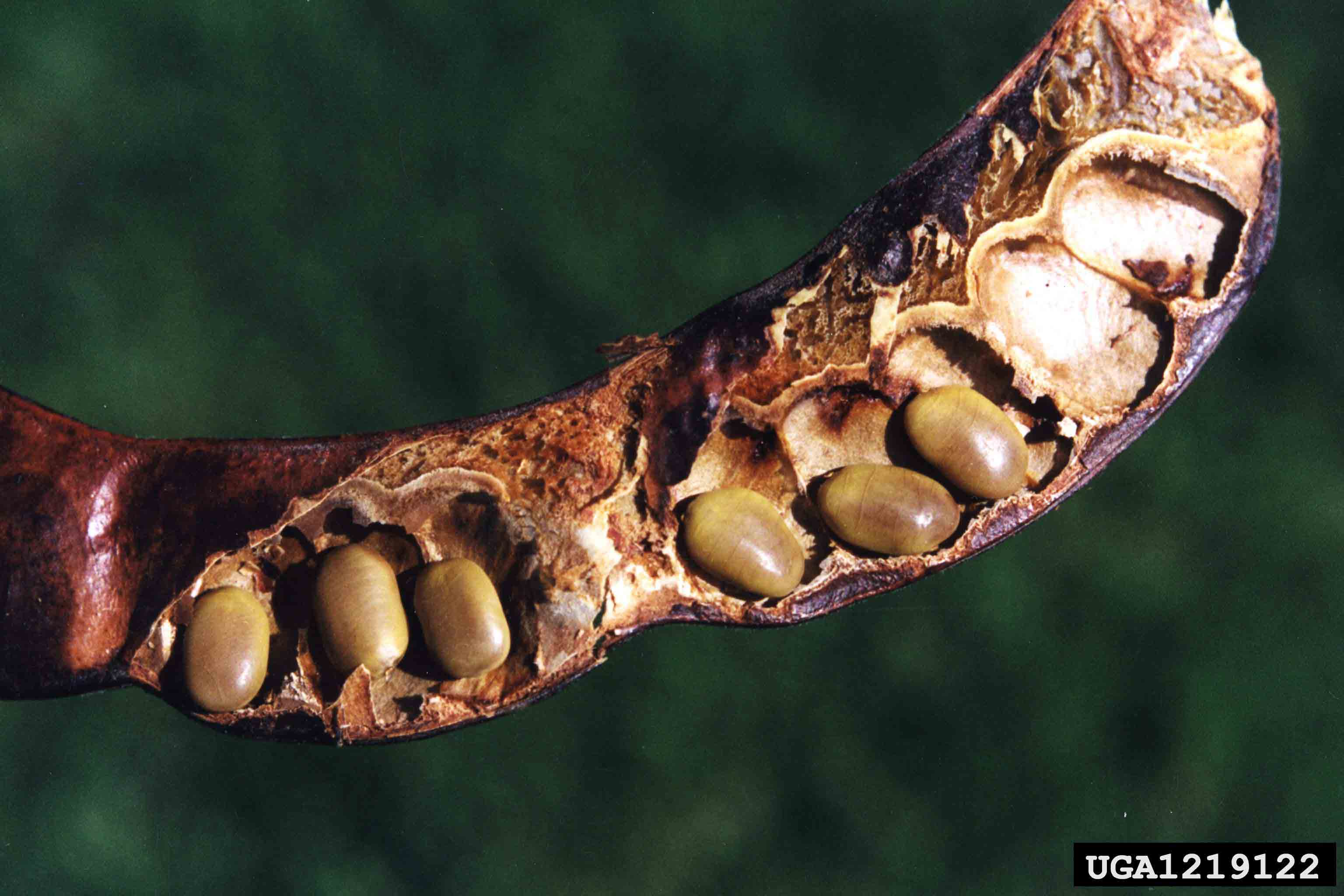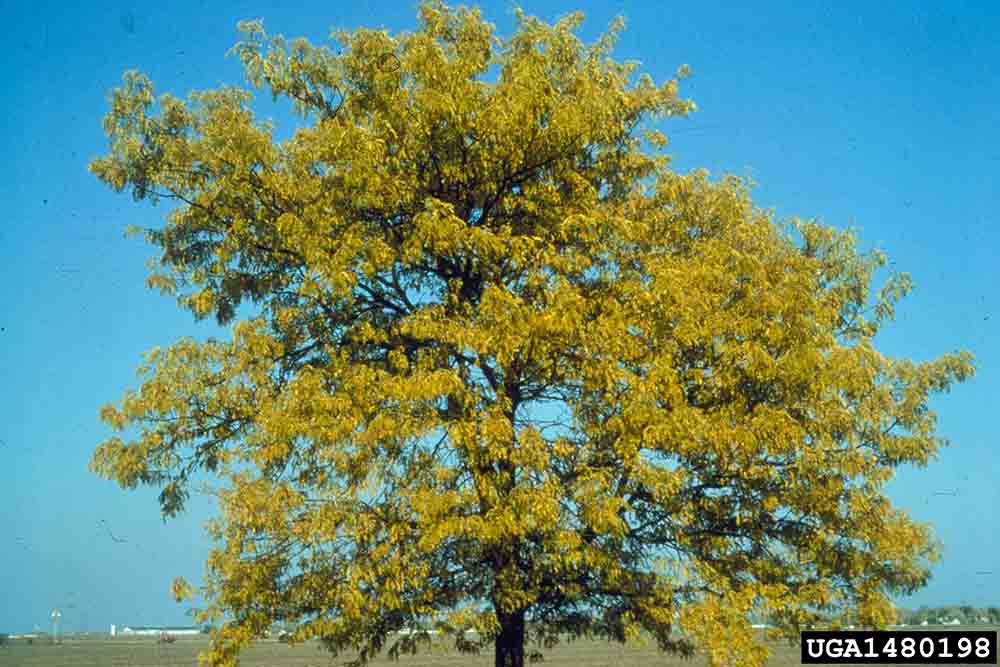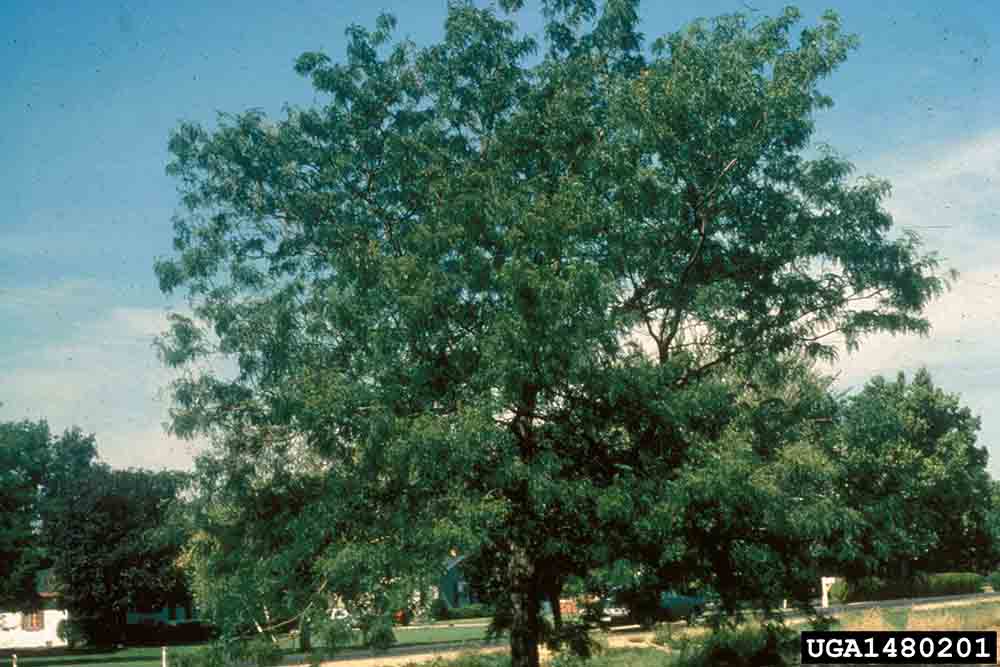Arkansas Tree Database
Honey Locust
Honey Locust
Scientific name:
Gleditsia Triacanthos
Size:
30'-75' tall by as wide, up to 100' tall
Leaves:
alternate, pinnately compound, 6"-8" long, with 18-28 leaflets or bipinnately compound with 4-7 pairs of secondary leaflets, with small rounded teeth
Flowers:
greenish yellow, inconspicuous
Fruit:
flat pod, 8"-15" long, flattened, often twisted, messy, browsed by wildlife for sugary pulp surrounding the seeds
Fall Interest:
clear yellow; deciduous
Culture:
sun; adaptable
Disease/Insect:
mites, cankers, web worms, borers
Use:
aggressive spreader and a problem for pastures because the thorns puncture tractor tires; good source of honey; not recommended for home landscapes; used for posts, crossties
Cultivars:
thornless variety Gleditsia triacanthos f. inermis with no thorns and few or no seed pods; good shade tree and street tree; good for bees; 'Aurea' also tolerant of compacted soil
Notes:
bark dark gray-brown and divided into wide, flat, often peeling ridges, with 3"-10" stout, branched thorns growing in clusters from trunk, twigs, and branches; Native Americans used dried pulp from pods for sweetener and the wood for bows; visited by bees and butterflies; native to Arkansas
Resources:
Click thumbnail to enlarge images

